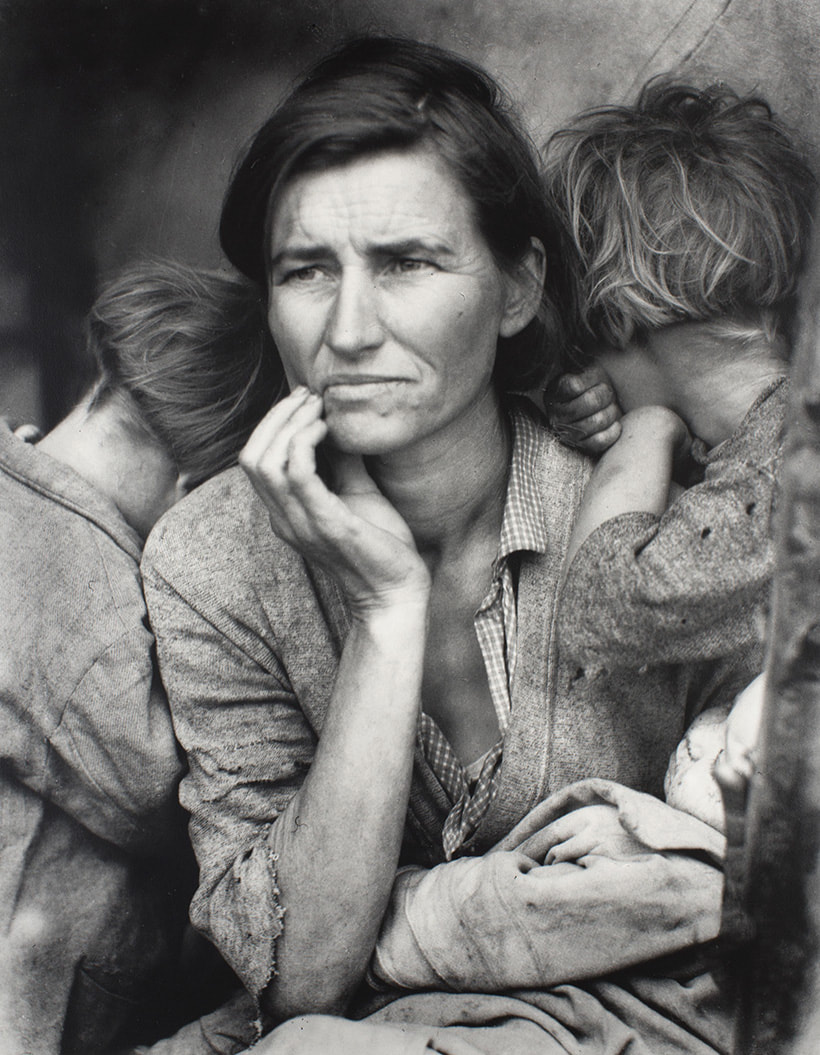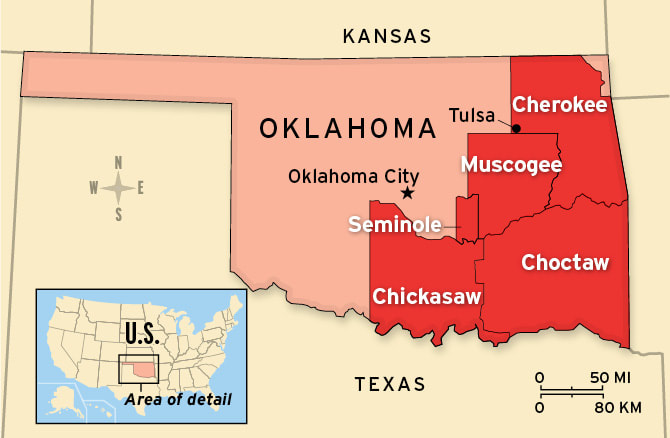Of Mice and Men | The Dust Bowl
|
Migrant Mother | Analysis
Photograph by Dorothea Lange (1936)
This is photograph /ˈfəʊtəɡrɑːf/, known as the Migrant Mother, is one of the most iconic pictures in American History. It was taken by Dorothea Lange at a migrant farmers’ cam in California. The photographer /fəˈtɒɡrəfə(r)/ was working for a government agency. She and other photographers took about 80,000 photos between 1935 and 1944 in an effort to capture the plight of Dust Bowl farmers and raise public awareness.
Contenu reservé aux membres | Member Only ContentConnectez-vous pour lire la suite | Sign in to read more
|
If you are already logged in, please scroll down. | Si vous êtes déjà connecté, veuillez descendre.
|
|
|
|
Description
|
This photograph evokes the uncertainty and despair resulting from continual poverty. It came to symbolise the hunger, the poverty and despondency endured by many Americans during The Great Depression.
On March 1936, the morning after the photographs were taken, Lange printed them and took them to the San Francisco News. They were then published to illustrate an article detailing the plight of the destitute pea pickers. The story was repeated in many newspapers throughout the country. Americans were extremely shocked that the farmers that put food on their tables could not feed themselves or their children.
The photographer did not ask her name (Florence Owens Thompson) or history (background), and the mother’s identity remained unknown for over 40 years after the picture was taken. Lange took seven photos that day, the last being the well-known Migrant Mother. When Lange took the photo, she did not even know that the woman was a full-blooded Native American, born and brought up (raised) in Oklahoma, in the Indian Territory of the Cherokee Nation.
On March 1936, the morning after the photographs were taken, Lange printed them and took them to the San Francisco News. They were then published to illustrate an article detailing the plight of the destitute pea pickers. The story was repeated in many newspapers throughout the country. Americans were extremely shocked that the farmers that put food on their tables could not feed themselves or their children.
The photographer did not ask her name (Florence Owens Thompson) or history (background), and the mother’s identity remained unknown for over 40 years after the picture was taken. Lange took seven photos that day, the last being the well-known Migrant Mother. When Lange took the photo, she did not even know that the woman was a full-blooded Native American, born and brought up (raised) in Oklahoma, in the Indian Territory of the Cherokee Nation.
The following are the six other photographs:



